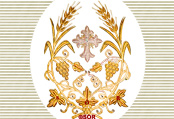
 |
|
||
| Evolution of Liturgical Traditions |
|
During the course of the early centuries of Christianity, the geographical area of each patriarchate developed its own distinctive local liturgical traditions. At the same time, the central features of Christian worship were shared between these traditions throughout the Christian world. By about the sixth century the following distinctive liturgical traditions, or rites, had emerged:
Owing to the popularity of pilgrimage to Jerusalem, the liturgical rites of that patriarchate sometimes came to influence other rites. Later on, too, in the Middle Ages there was a certain amount of interaction between the different liturgical traditions, and in some cases the tradition of one particular patriarchate came to dominate in areas which had originally started out with their own local tradition. The Syriac TraditionThe original Antiochian rite is preserved only by the Syriac Orthodox, Syrian Catholic and Maronite Churches. In the course of the Middle Ages the Syrian Orthodox and Maronite liturgical rites each further developed in its own way, and within the Syriac Orthodox tradition there came into existence two branches, each with its own distinctive features, that of Antioch in the more western areas, and that of Tagrit in the east. The roots of the liturgical tradition of the Church of the East may go back to Edessa, and this may account for several interesting features shared with the Syriac Orthodox and Maronite rites. Central to worship of all the Christian Churches is the Eucharistic Liturgy, the Divine Mysteries (rozé qaddishe), known under many different names to the different Christian traditions. Following the Liturgy of the Word, all the eastern Christian traditions have several different Anaphora which may be used: these all follow similar structures but differ from one another as far as the wording of the individual prayers is concerned. Whereas the Byzantine Orthodox liturgical tradition has only three Anaphoras (of St. John Chrysostom, for normal use; St. Basil, for Lent; and St. James), that of the Syriac Orthodox has over 70 extant Anaphoras, thus forming by far the richest collection in any Church. Anaphoras were written even as late as the fifteenth century. In the tenth and eleventh centuries, in particular, it seems that quite a lot of Greek liturgical poetry was translated into Syriac for the benefit of the Syriac speaking members of the Byzantine Orthodox in Syria. Some of these translated texts were also adopted into the Syriac Orthodox liturgical tradition where they are usually referred to as Qonune Yawnoye, the "Greek Canons". Over the course of centuries, and especially in the last century, other languages alongside Syriac have been used in the liturgy. Bilingual editions of various Anaphoras (1991), and of the baptismal, marriage and funeral rites (1974), have been published in the United States by the late Mor Athanasius Samuel. Source: Brock, Sebastian and David G.K. Taylor (ed.s), The Hidden Pearl: The Syrian Orthodox Church and Its Aramaic Heritage. (Rome: Trans World Film Italia, 2001). |
| Copyright © Syriac Orthodox Resources. All Rights Reserved. |
| Last Update: October 14, 2001 |